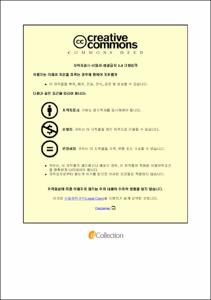Cesium Sorption Characteristics of Polysulfone Carrier with HNO3 treated Bamboo Charcoal
- Alternative Title
- 질산처리된 대나무활성탄으로 조제한 폴리술폰 (polysulfone) 담체의 세슘 흡착 특성
- Abstract
- The cesium (Cs) sorption characteristics of a bead-type polysulfone carrier contained HNO3 treated bamboo charcoal (BC) in water system were investigated and its Cs removal efficiency from water was also identified by various laboratory experiments and sorption model studies. Results from batch sorption experiments showed that the Cs sorption rate of the polysulfone carrier with only 5% HNO3 treated BC was very fast and the reaction equilibrium reached within 1 hour having the Cs removal efficiency of 57.80%. The Cs removal efficiency of the polysulfone carrier in water after 24 hours reaction maintained > 69% at a wide range of pH and temperature conditions, suggesting its applicability under various water system. Batch sorption experiments were repeated for polysulfone carrier coated with two types of microorganisms (Pseudomonas fluorescens and Bacillus drentensis), which were well known for the high heavy metal removal efficiency in water. The Cs removal efficiency for microorganism coated polysulfone carrier was increased by 19% and 18%, respectively, compared to that only polysulfone carrier without microorganisms coated. The Cs desorption rate of polysulfone carrier for 24 h was lower than 16%, showing the Cs was stably attached on HNO3 treated BC in so much as its long-term use. The maximum Cs sorption capacity (q_m) of the polysulfone carrier calculated from the Langmuir isotherm model study was 60.9 mg/g, which was much higher than those of other adsorbents from previous studies for 1 hour sorption time. The sorption kinetic model study represented that the polysulfone carrier was well fitted to the pseudo-second-order model. Results of the Cs sorption isotherm and kinetic model study suggested that the relatively rapid sorption including precipitation on the HNO3 treated BC surfaces in a polysulfone carrier would be one of the prevailing processes to remove Cs from water system. Results of continuous column experiments showed that the column packed with polysulfone carrier coated with microorganisms maintained more than 80% of the Cs removal efficiency during 100 pore volumes flushing suggesting that only 14.7 g of polysulfone carrier (only 0.75 g of HNO3 treated BC included) can successfully clean-up 7.2 L of Cs contaminated water (the initial Cs concentration: 1.0 mg/l; the effluent concentration: < 0.2 mg/L). The present results demonstrated that the polysulfone carrier with HNO3 treated BC has a remarkable potential to remove Cs from various water system.
- Issued Date
- 2020
- Awarded Date
- 2020. 8
- Type
- Dissertation
- Publisher
- 부경대학교
- Affiliation
- 부경대학교 대학원
- Department
- 대학원 지구환경과학과
- Advisor
- Minhee Lee
- Table Of Contents
- CHAPTER I. INTRODUCTION 1
CHAPTER II. OBJECTIVES 8
CHAPTER III. MATERIAL AND METHODS 10
3.1 Design of experiments 10
3.2 Materials and chemical reagents 11
3.3 Surface activation of BC by HNO3 11
3.4 Preparation of polysulfone carrier with HNO3 treated BC 13
3.5 Batch sorption experiments 15
3.6 Desorption experiments 18
3.7 Effect of microorganisms coated on the polysulfone carrier on the Cs sorption capacity 19
3.8 Continuous column experiments 21
3.9 SEM-EDS analysis for the polysulfone carrier 24
3.10 Study on the Cs sorption characteristics on polysulfone carrier 25
3.10.1 The Cs sorption kinetic study 26
3.10.1.1 Pseudo-first-order kinetic model 27
3.10.1.2 Pseudo-second-order kinetic model 28
3.10.2 Sorption isotherm study 29
3.10.2.1 Langmuir’s isotherm 29
3.10.2.2 Freundlich isotherm 32
CHAPTER IV. RESULTS AND DISCUSSIONS 33
4.1 Batch sorption studies for Cs 33
4.1.1 Estimating of the Cs sorption time 33
4.1.2 Effect of BC amount in polysulfone carrier on the Cs sorption 34
4.1.3 Effect of adsorbent dosages on the Cs sorption 35
4.1.4 Effect of solution pH on the Cs sorption 37
4.1.5 Effect of temperature on the Cs sorption 38
4.2 Desorption experiments 39
4.3 Batch experiment with polysulfone carrier coated by microorganisms 41
4.4 Continuous column experiments 43
4.5 SEM-EDS analyses for the Cs sorbed polysulfone carrier 45
4.6 Sorption kinetic study 47
4.7 Sorption isotherm study 49
CHAPTER V. CONCLUSIONS 55
REFERENCES 58
ACKNOWLEDGMENTS 71
- Degree
- Master
- Files in This Item:
-
-
Download
 Cesium Sorption Characteristics of Polysulfone Carrier with HNO3 treated Bamboo Charcoal.pdf
기타 데이터 / 2.41 MB / Adobe PDF
Cesium Sorption Characteristics of Polysulfone Carrier with HNO3 treated Bamboo Charcoal.pdf
기타 데이터 / 2.41 MB / Adobe PDF
-
Items in Repository are protected by copyright, with all rights reserved, unless otherwise indicated.